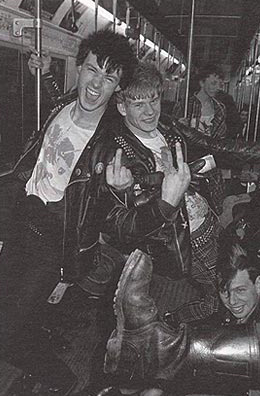4 Mapping the field: competing constructions
4.1 Natural/social
In the previous section we looked at the issue of competing explanations of social problems. Here we want to take a rather different approach by starting from one of the major dividing lines between different types of explanation. These dividing lines are ones that recur in the definition, interpretation and explanation of a range of social issues: for example, patterns of inequality between men and women; crime and juvenile delinquency; the persistence of poverty, and so on. Despite the fact that we have referred to these topics as social issues or social problems, the most basic dividing line between different social constructions is the distinction between the natural and the social. This might seem slightly confusing, given our focus here on social issues, but ideas about the natural basis of social arrangements or social problems are widespread. There are many claims about social issues that begin with the formulation ‘It's only natural that …’. For example, it's only natural that ‘men go out to work’, ‘boys will be boys’, ‘people will not trust other races’, and so on.
If we consider this approach as a ‘social construction’ – a way of perceiving or understanding the world – instead of exploring it in ways which seek to challenge or confirm the ‘facts’ on which it is based, what effect would that have?
Ideas about the natural basis of society or of social problems within society refer us to a set of claims about the universal laws of biology or evolution that determine how we might behave. Such ideas often place an emphasis on competition, conflict and struggles for evolutionary success (the ‘survival of the fittest’). They identify a range of attributes as the biological basis of human society and often insist that these are unchanging and unchangeable. In claims about the natural, biological attributes are often brought forward as explanations of social patterns. Thus, biological differences between men and women are drawn upon to explain differences in social behaviour or patterns of social inequality. Classically, women's biological capacity to bear children (whether they do so in practice or not) has been held to account for a range of social patterns. For example, for many years women's exclusion from education was justified on the grounds that they didn't need to know anything beyond being a wife and mother, because stimulation of the brain would drain energy that should be devoted to the tasks of reproduction. Equally, men's behaviour has been interpreted as the product of biological forces and drives. For instance, biologists have developed an approach known as ‘parental investment theory’ to explain why women are monogamous home-builders while men are philandering adulterers. According to this theory, the different ‘investments’ which eggs and sperm represent for the two sexes, produces a different orientation to the genetic challenge of reproduction. Women invest qualitatively (the best chance for a small number of eggs), while men invest quantitatively (scattering their seed). Such distinctions between men and women have been held to account for a variety of social differences – in attitudes, behaviour, sexuality, patterns of employment, levels of income, involvement in politics, and so on (Barash, 1981; Wilson, 1981).
While there are many arguments about whether there is evidence to support this sort of explanation, our main concern with it here is as a distinctive type of social construction. It centres on the claim that our social world is formed and constrained by a variety of natural causes and conditions. The emphasis on the natural in this form of social construction provides a strong claim to authority and truth, by referring to a world of natural laws that are seen as universal and immutable. As a consequence, many of the social constructions that refer to natural conditions or causes tend to warn against attempts to change or tamper with these natural laws. Social ‘interference’ – for example, attempts to promote greater equality between men and women – is likely to have undesirable and ‘unnatural’ consequences.
Where social constructions that centre on ‘nature’ tend to be resistant to change, social constructions that centre on the ‘social’ conditions and causes of social issues tend to imply the possibility of change, reform or improvement. An emphasis on the social character of social arrangements suggests that such patterns might be re-arranged. Thus, if some forms of undesirable behaviour – such as delinquent behaviour by young men – are defined as resulting from following bad examples, this construction implies that the provision of better role models would lead to improved behaviour. By contrast, ‘natural’ constructions would draw attention to the biological or genetic basis of such behaviour – ‘boys will be boys’ – indicating little hope for intervention or change.
Despite the distinction between ‘natural’ and ‘social’ here, both types of approach to social issues are examples of social construction. Each provides a way into defining, interpreting and acting in the social world that we inhabit. Each also provides a framework within which events, actions and types of people become meaningful, and which allows us to position ourselves in relation to them. However, the distinction between natural and social orientations is a significant one because of their different explanations of social behaviour. Different policy conclusions will also be drawn.

